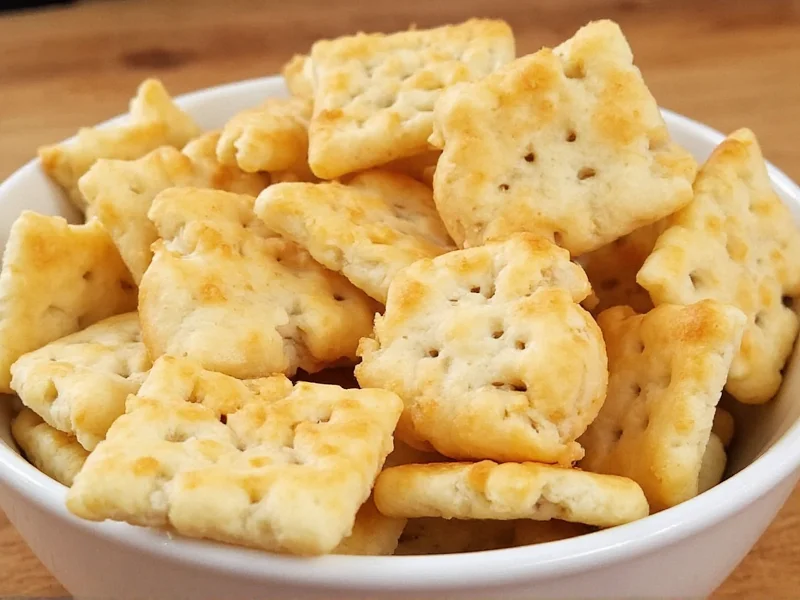Understanding Ranch-Flavored Soups and Cracker Pairings
When searching for ranch soup crackers, most home cooks seek the perfect accompaniment for creamy ranch-based soups. Ranch dressing's distinctive blend of buttermilk, herbs, and garlic creates a delicate flavor profile that requires thoughtful cracker pairing. Unlike heartier soups that can handle robust breads, ranch soups benefit from subtle, texturally appropriate crackers that enhance rather than compete with the soup's creamy herb notes.
Why Cracker Selection Matters for Ranch Soup
The right crackers for ranch-flavored soup serve three critical functions: providing textural contrast to creamy bases, absorbing flavors without disintegrating, and complementing rather than overwhelming ranch's delicate herb profile. Many home cooks make the mistake of using standard saltines or butter crackers that either dissolve too quickly or introduce competing flavors that mask the ranch seasoning.
Top Cracker Recommendations for Ranch Soup
After extensive testing of various crackers that go with ranch soup, these varieties consistently deliver the best experience:
| Cracker Type | Texture Profile | Flavor Compatibility | Soaking Time Before Sogginess |
|---|---|---|---|
| Buttermilk crackers | Firm yet tender | Perfect flavor harmony | 8-10 minutes |
| Herb-seasoned oyster crackers | Crisp bite | Complementary notes | 5-7 minutes |
| Lightly salted water crackers | Neutral base | Cleanses palate | 6-8 minutes |
| Garlic-herb crostini | Substantial crunch | Enhances savory notes | 10-12 minutes |
| Standard saltines | Too soft | Overpowers ranch | 3-4 minutes |
Texture Considerations for Ranch Soup Crackers
Texture represents the most crucial factor when selecting best crackers for ranch soup. The ideal cracker maintains structural integrity for 5-8 minutes in hot soup while providing enough resistance to offer textural contrast. Buttermilk crackers excel here because their slightly denser crumb structure withstands creamy liquids better than standard crackers. For those preferring homemade options, a simple buttermilk biscuit recipe cut into small squares creates perfect homemade ranch soup cracker alternatives that can be baked to precise crispness.
Flavor Pairing Principles
Ranch dressing's complex flavor profile—featuring buttermilk, dill, garlic, and chives—requires crackers with complementary rather than competing flavors. The most successful ranch dressing soup cracker combinations feature:
- Subtle dairy notes that echo buttermilk components
- Mild herb accents that enhance rather than duplicate ranch flavors
- Minimal sweetness that won't clash with savory elements
- A light salt content that balances without overwhelming
Avoid crackers with strong competing flavors like cheese, bacon, or heavy spices that will mask ranch's delicate herb balance. The goal is harmony, not competition, between your creamy ranch soup cracker pairings.
Practical Serving Techniques
How you serve crackers with ranch soup significantly impacts the experience. For optimal results with your ranch-flavored soup cracker pairings:
- Toast crackers lightly before serving to maximize crispness
- Serve crackers on the side rather than pre-floating in soup
- Offer multiple cracker varieties for customization
- Consider adding fresh herbs to crackers for visual appeal
- Store crackers in airtight containers to maintain crispness
Professional chefs recommend placing crackers in a separate basket alongside ranch soup rather than directly in the bowl. This approach preserves texture integrity and allows diners to control their ideal soup-to-cracker ratio for perfect how to choose crackers for ranch soup experiences.
Common Pairing Mistakes to Avoid
Many home cooks make critical errors when selecting crackers that go with ranch soup:
- Using overly sweet crackers that clash with savory ranch notes
- Choosing crackers with strong competing flavors like blue cheese
- Adding crackers too early, causing premature sogginess
- Using standard saltines that dissolve within minutes
- Overloading soup with too many crackers at once
Remember that the best ranch soup crackers enhance rather than dominate the soup experience. When in doubt, simpler is better—opt for mild-flavored crackers with excellent structural integrity that complement ranch's creamy herb profile without introducing competing elements.
Creating Custom Ranch Soup Crackers
For those interested in homemade ranch soup cracker recommendations, a simple buttermilk biscuit recipe provides the perfect foundation. Combine 2 cups flour, 1 tablespoon baking powder, 1/2 teaspoon garlic powder, 1/4 teaspoon dried dill, 1/2 cup cold butter, and 3/4 cup buttermilk. Roll to 1/4-inch thickness, cut into small squares, and bake at 400°F for 12-15 minutes until golden. These custom crackers deliver ideal texture and flavor harmony with ranch-based soups while offering complete control over ingredients and seasoning levels.











 浙公网安备
33010002000092号
浙公网安备
33010002000092号 浙B2-20120091-4
浙B2-20120091-4